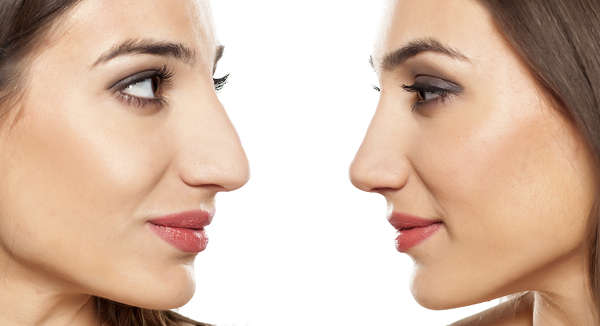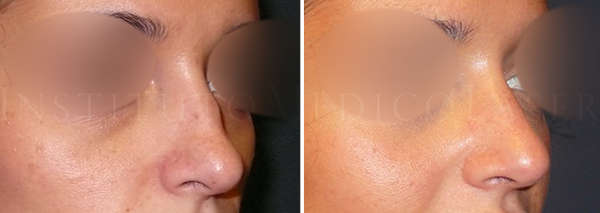Rinostep is a set of minimally invasive techniques with maximum efficiency aimed at correcting specific nasal problems, beatifying the patient's face while preserving its naturalness.
The nose is one of the most characteristic features of a person's face. The nasal pyramid is the most projected part of the face and is a key piece in the perception of facial beauty.
Until now, correction of the various defects of the nose required undergoing the surgical procedure of rhinoplasty. Rhinoplasty is divided into several steps to differentiate surgical times.
Rinostep uses these steps to apply them in isolation or in combination with other minimally invasive techniques to perfect the nose under the following premises:

Rinostep is a set of minimally invasive techniques to correct specific aesthetic problems of the nose
The steps or strategic retouching of Rinostep are applied in the areas of the nose where the aesthetic problems are located:

Rinostep corrects the nasal tip, dorsum and base, in addition to perfecting the shape of the nose
The Rinostep techniques are characterised by being very specific, minimally invasive, outpatient procedures. Two factors are required for application:
The beautification and harmonisation of each patient's nose is conducted taking into account the rest of facial structures, so that the therapeutic approach may require a selection of different steps or strategic retouching that the surgeon defines in a personalised and planned way with each patient. Rinostep's strategic techniques or retouching are:
Through sutures that are applied to the cartilage we can remodel the nasal tip, adding or subtracting projection to it.
Hyaluronic acid is an effective treatment to correct very specific defects of the nose, such as the improvement of a poorly projected or fallen tip, the easel, sunken radix or the cleft between the dorsum and the nasal tip.
To obtain the best results, it is essential to choose the proper density of hyaluronic acid, as well as the infiltration depth.

Before and after the infiltration of hyaluronic acid between the dorsum and the nasal tip
Bulbous nose or rhinophyma, which presents hyperplasia of the sebaceous glands and thickening of the nasal skin, is corrected with fractional CO2 laser.
By implanting a resorbable suture of polypropylene wires that is inserted at the level of the glabella and up to the nasal tip, we can lift a fallen tip.
To refine the nose skin, which reduces definition of the tip, we infiltrate filler materials at a deep dermal level.
Nasal cartilages can be reshaped, trimmed, superimposed or folded to increase or decrease volumes and modify the shape of the nose.
Grafts are applied in cases of cartilage weakness or in those in which the structures require very stable anchorage, as in fallen tips or patients with weaker tissue.
To narrow the nasal wings, the skin that covers them is trimmed slightly. If they are too narrow, grafts can be inserted under the skin to enlarge them.
When the columella is low it can be secured on the nasal septum, on the cartilages or on the skin of that region.
In curved dorsum, the area can be camouflaged by grafting the temporal muscle fascia, which is extracted from this region under the skin of the scalp with a minimal incision.
For dorsums which are not overly prominent, gentle liming can be conducted to increase the smoothness of the lines.
Osteotomy is surgical cutting of the bone. When the bones are very prominent or broad, we need to modify their shape by severing them. Traditionally, this has been the most aggressive manoeuvre of the technique, since it is performed with a chisel. With Rinostep, we perform the osteotomy with a piezoelectric scalpel, which achieves better controlled and quality modelling of the nasal bone structures.
For further information on which Rinostep techniques are best suited to you, request a free informative consultation with one of our medical experts.